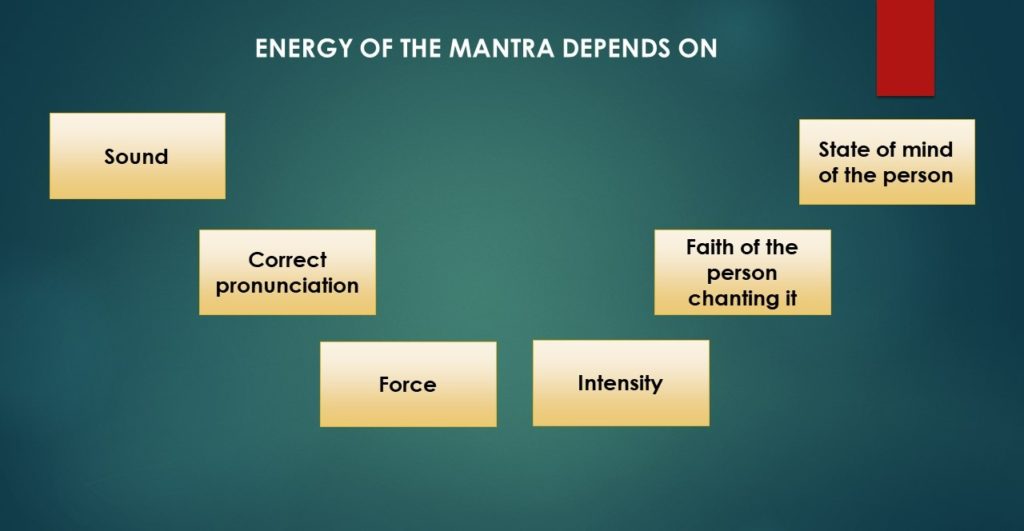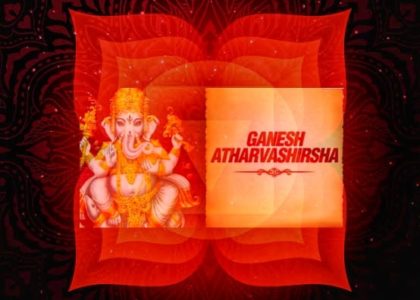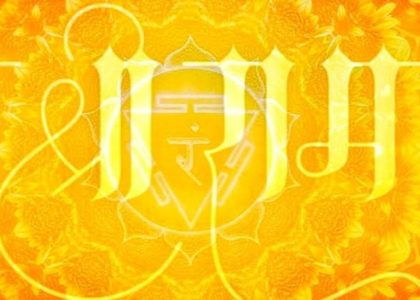Hello readers,
Ayurveda has used the belongings of the universe wisely as a part of treatment. Use of animals e.g., Gorochan (bile of cow), jaluka (leech), use of different ratnas (stones) like diamond, coral, emerald etc, different plants, water e.g., Different kashayas or other forms of processed water for example.
One more important thing our ancients knew is the perfect use of energies of the universe/cosmic energies, especially the sound energy. Different frequencies of sound, their vibrations and, most importantly, their effect on the human body were known to them. Mantra chikitsa mentioned as a part of daivavyapashraya chikitsa in Ayurveda is nothing but use of these sound energies. Vedas, especially Atharvaveda, have many specific mantras to treat different diseases. Let’s see some facts about mantras.
Ancient Indians were aware that a common man cannot understand this complicated science of sound energy. So, for the wellbeing of every single person without knowing the complexity of science and to avoid confusion, they arranged these mantras in the form of stotras. Then they merged this stotra chanting as part of the daily routine. What a beauty!
Mantras have shown their effect on the body as well as the mind provided that one chants them by understanding the meaning and with great faith. Exactly for this reason our great ancestors have created stotras of different deities. Common people who were already following some or the other deity had great love and faith in that deity, so stotras were composed as that particular deity’s stuti (praise), kavacha (protection), sahasranama (1000 names of that deity) etc. The stotras provided psychological as well as physical benefits of those mantras. Even if someone chants them without understanding or with no feelings, the physical benefits will be there though the psychological may go missing.
WHAT ARE MANTRAS?
Mantras are sounds, syllables, words or groups of words that are repeated to gain positive impact at physical, mental and physiological levels of a living being.
‘Manaanat trayate anena iti mantraha’
Mantra is the one which protects us due to its repeated incantation.
It is the combination of the word ‘man’ -the mind and ‘tra’ – vehicle or tool. It means a mantra is a tool for mind (thoughts).
HOW MANTRAS AFFECT HUMAN BODY?
First, we take a look at what Ayurveda says.
Ayurveda believes in Pinda Bramhanda theory (gross meaning is human is a miniature of universe). So, the cosmic energies have an impact on the human body.
Mantra is considered as a science of the subconscious as well as cosmic powers of sound. Mantra has an effect on mind, soul and pancha mahabhootas. Amongst all, aakasha mahabhoota representing space is vital here as sound is created in space. Nothing can exist without space.
Ayurveda strongly emphasizes use of mantras from the birth of a child till the last ritual after death of a person. So obviously it has recommended different mantras for balancing tridoshas (basic energies), sapta dhatu (different tissues) and manas (mind) in different diseases. Mantras can cleanse the toxins at cellular level. Specific mantras will balance the disturbed energies.
Without getting into too much details, let’s see in which diseases mantras are recommended.
♣ Jatakarma– rituals for a newborn. Reciting specific mantras in the newborn’s ear and requesting protection from the evil.
♣ In treatment of jwara (fever), Charaka recommends chanting of Shri Vishnu Saharsanama (1000 names of lord Vishnu).
♣ In poisoning, while preparing an antidote, specific mantras are given in Agadatantra (toxicology branch of ayurveda), to increase the efficacy of the antidote.
♣ In the treatment of different manasrogas (psychiatric disorders) especially unmada (schizophrenia) & apasmara (epilepsy).
♣ During the latent phase of labor in pregnancy.
♣ Before collecting herbs for medicine preparation, recitation of mantra is advised.
♣ Mantras to chant before eating food.
♣ Reciting mantras of the sun helps in headache and bad eyesight.
♣ For activating sympathetic nervous system gayatrimantra is useful whereas mahamrutunjaya mantra is beneficial for parasympathetic nervous system.
♣ Last but not the least, it is advised to recite certain mantras before performing panchakarma.
In short, mantras create harmony within our body cells and give us physical health.

For an optimal effect of mantras, Ayurveda recommends recitation along with the right diet and right lifestyle.
YOGIC ASPECT:
Yoga considers 72000 naadis (psychic nerves) to exist throughout the body. When a sound vibration of particular frequency is created by chanting a specific mantra, these psychic nerves distribute these diffused vibrations to their physical counterparts (physical nerves). This is carried out by the 6 chakras (plexuses) situated in the spinal region. Particular beejamantra of that chakra nourishes particular dhatu, makes brain cells active & thus makes us mentally & physically healthy.
MODERN ASPECT:
Today modern science is also studying the effects of sound on the human body and mind. Studies on mantra chanting and music therapy are being carried out at various institutes worldwide.
Two words are important to understand their approach.
NLE -Neuro Linguistic Effect, which studies neural mechanisms in the brain dealing with sound (language).
PLE -Psycho Linguistic Effect, which studies psychological mechanisms.
So, when a mantra is chanted with specific tone & rhythm, NLE effect is created automatically. It affects production and release of certain chemicals in the brain that enhances healing/curing. Here proper pronunciation, rhythm & intensity of sound have to be perfect to get the desired effects.
Role of PLE is an additional benefit when we chant the same mantra by understanding the meaning. This helps in healing the mind as well as the body.
Soft sounds have a soothing effect on the nervous system. Music therapy is useful in cardiac ailments as it enchants the heart, regulates brain waves & adrenaline levels.
SPIRITUAL ASPECT:
Spiritual aspect emphasizes more on faith and belief of a devotee/disciple on his deity or guru and the mantra given by him/her. Chanting of a mantra given by a guru who already has a well established cosmic connection gives us benefits of that mantra in folds together, provided one has undoubted faith in his guru.
Regular chanting of mantra or kirtana (telling spiritual or mythological stories and teachings of saints) or bhajana (spiritual songs) has almost the same effects. So, reciting as well as listening both have positive effects on mind and body.
Regular recitation- Reduces restlessness of mind.
-Increases concentration and memory.
-Brings restraint in life.
Mantras can be chanted in 3 ways.
1. Loudly (vaikhari vani)
2. Lip whisper (upanshu vani)
3. Mentally (para vani)
A lot more can be explained under this heading of spiritual aspect. For time being this much is sufficient.
Conclusively all the sciences have admitted that mantra chanting synchronizes the body, mind, voice and breath.
One important thing is that you must learn which mantra to be recited for what purpose by an expert.
Basic rules for chanting:
❖ Select mantras with proper guidance.
❖ Learn chanting of mantras with proper pronunciation, rhythm and tone.
❖ Sit comfortably on a mat or rug as it prevents loss of body energy.
❖ Do not chant hurriedly, running behind the numbers. Chanting must be clear, slow and in low voice (upanshu vani i.e., lip whisper).
❖ Breath slowly and deeply. Try to chant with breath.
❖ Always relax your muscles while chanting, else you may lose concentration due to rigidity or stiffness of muscles.
❖ Close your eyes while chanting.
Those who want to chant mantras but presently have no guidance, can start with chanting Omkara. Omkara is considered as the pranava, the first sound on earth. It has immense power and scientifically proven benefits.
Get started, this is the era of Vedas. Take a step towards connecting yourself with the universe by chanting Mantras.










Great…
Rujuta